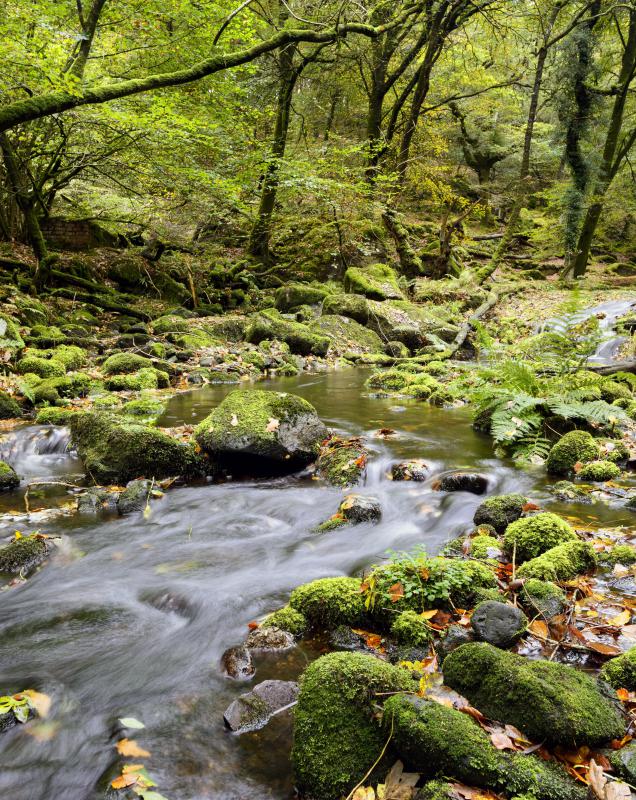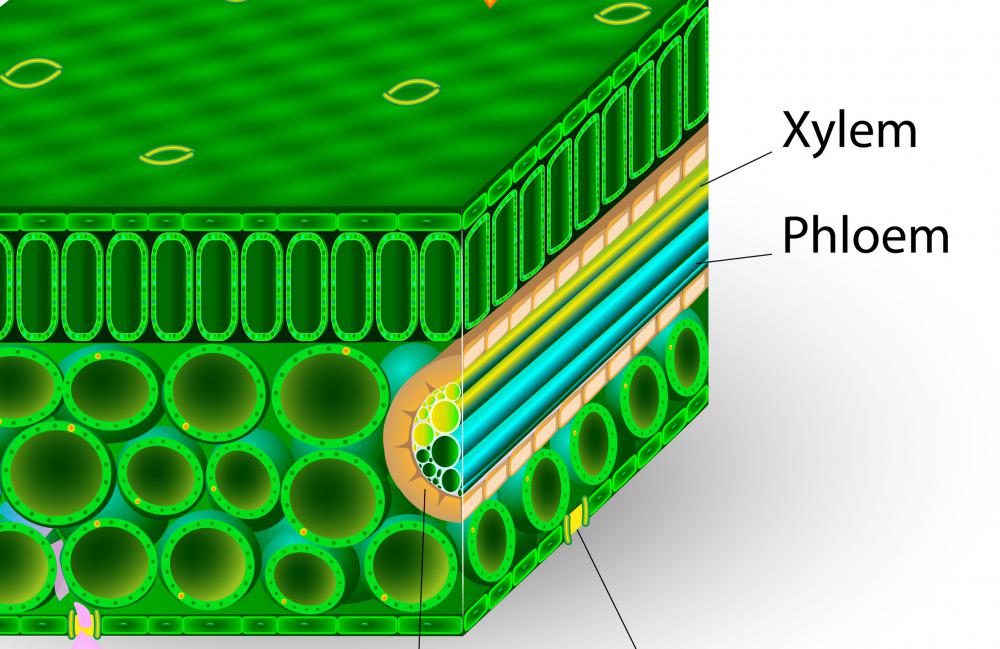At AllThingsNature, we're committed to delivering accurate, trustworthy information. Our expert-authored content is rigorously fact-checked and sourced from credible authorities. Discover how we uphold the highest standards in providing you with reliable knowledge.
What are the Different Types of Plant Species?
The plant kingdom is a rich and varied world, with species such as green algae that grow on the microscopic level as well as monstrously large, imposing beauties like the giant redwood trees. Botanists, who study plant species, have identified more than 300,000 species of plants that presently exist. The existing species can be broken down into a few groups, including bryophytes, ferns, fern allies, and seed plants.
As with species in the animal kingdom, the species that currently exist within the plan kingdom represent only a fraction of those that have existed on the planet Earth. Archeologists and geologists regularly discover fossils that attest to the fact that there were plants on this planet that no longer grow anywhere known to humans.
Bryophytes are a group that contain plant species that do not flower and do not produce seeds. These kinds of plants reproduce themselves through spores. A common type of bryophyte is moss.
Seed plants, which are also referred to as "spermatophytes," reproduce by producing seeds. Flowering plants and conifer trees are examples of this type of plants. Many fruits and vegetables are also part of the seed plant variety.

Ferns, like bryophytes, reproduce via spores. The thing that makes this type different from bryophytes is that the plants within it have a vascular structure, meaning that they have a xylem and a phloem. There are about 12,000 species within the fern grouping. The term "fern ally" refers to a group of plants that also reproduce via spores and have vascular systems but are not true ferns.

A brief sketch cannot in any sense capture the breadth and variety of the many mosses, ferns, flowers, trees, lichens, shrubs, algae, and grasses that currently live on planet Earth. This subject has been of great fascination to scientists of various stripes for thousands of years. One of the best places, other than the world beyond the front door, to get a sense of the many species of plants on the planet is at a natural history museum. Another very interesting and beautiful resource for information about plants is a book called Das Naturalienkabinet or Cabinet of Natural Curiosities, which is a compilation of the color plates illustrated via commission by a man named Albertus Seba.
Frequently Asked Questions
How many different types of plant species are there?

According to the Royal Botanic Gardens, Kew, there are over 390,000 known plant species. This number is constantly growing as new species are discovered. Plants are categorized into groups such as angiosperms (flowering plants), gymnosperms (conifers and allies), ferns and horsetails, and mosses and liverworts, each with unique characteristics and ecological roles.
What are angiosperms and why are they significant?

Angiosperms, or flowering plants, are the most diverse group of plants with over 300,000 species. They are significant because they provide essential resources such as food, medicine, and timber. Additionally, angiosperms are crucial for ecological balance, offering habitat and food for wildlife, and playing a key role in carbon sequestration.
Can you explain what gymnosperms are?

Gymnosperms are a group of seed-producing plants that includes conifers, cycads, ginkgo, and gnetophytes. Unlike angiosperms, gymnosperms do not produce flowers; their seeds are often exposed or on the scales of cones. They are important for their timber and resin and include some of the oldest living plant species on Earth.
What role do ferns and horsetails play in the ecosystem?

Ferns and horsetails, which reproduce via spores and do not produce seeds or flowers, are important for maintaining soil health and moisture levels. They often colonize disturbed areas, helping to prevent soil erosion. Ferns, in particular, are also used ornamentally and have a role in traditional medicine.
How do mosses and liverworts contribute to the environment?
Mosses and liverworts are non-vascular plants that play a critical role in ecosystem function. They act as bioindicators for air and water quality, help in soil formation, and provide microhabitats for invertebrates. These plants also contribute to the water cycle by retaining moisture in their environments.
Why is plant species diversity important?
Plant species diversity is vital for ecosystem resilience, providing a range of functions from pollination to nutrient cycling. Diverse plant life supports a variety of wildlife, ensuring food web stability. It also enhances genetic diversity, which is crucial for adapting to changing environmental conditions and combating diseases and pests.
AS FEATURED ON:
AS FEATURED ON:
















Discussion Comments
I always wondered how many plant species there were. Actually, 300,000 doesn't sound like that many in the scheme of things. Especially when you consider that there are are several million types of insects.
What I think is most interesting is how the different plants can adapt to various conditions. I always loved learning about cacti and other desert plants when I was in school. It seems like a place with such harsh conditions wouldn't be able to grow anything, but deserts can have tons of different plants growing.
I also always liked learning about all of the different defense mechanisms that plants came up with. A lot of people automatically think of cacti, but almost every plant has some type of chemical it produces to defend itself. Some of them are deadly to humans and not other animals while others make plants taste great to us, but can kill other animals.
I don't know why I have never really thought of conifers as seed plants. I guess I knew that there were seeds inside the cones, but conifers just don't act like the rest of the "normal" plants. I'm used to seeing some type of flower that makes seeds, and they don't have that.
Just from a gardening standpoint, I think it is good that the vast majority of plant species are flowering plants. There is so much diversity between all the different species. I love going outside in the spring and looking at all of the different wildflowers.
It's amazing when you really start looking at the flowers and seeing how different they really are in terms of flower shape, number of petals, etc.
@Emilski - I agree. The diversity of plant species is astounding both in physical appearance and various environmental adaptations. Before I read this, I didn't realize just how many species of plants there were. I have never had to opportunity to visit any rainforests, but I'm sure it would be much more diverse than walking around in a normal wooded area in the US.
As far as strange plants go, I remember a friend of mine growing up had a plant called welwitschia. It is a desert plant that grows in Africa, I believe. Looking at pictures would be a lot better, but basically the plants always look like they are wilted and dying. They have sort of leathery leaves that make a dense mat on the ground. If you've never seen one, it's worth a look.
@wavy58 - I would say most people are more familiar with seed plants just because they make up the vast majority of plants. There are a lot of moss and fern species, but when you start comparing those to all of the grasses, wildflower, trees, and shrubs, it's no comparison.
I do find, though, that the bryophytes and other spore plants do tend to be the most interesting. I live in a pretty wooded area and we have a plant called horsetail that comes up every year. I always say that if I went to an alien plant, I would expect to find plants like that.
When horsetails come up, they basically look like woody asparagus shoots. Then they leaf out and have whorls of delicate little branches that pop out. They are definitely the oddest plant I know of.
I had never paid much attention to the reproduction of ferns. I have always bought them in hanging pots, so I've never tried to grow any.
I did not know that they reproduced in the same way as moss. I think that the majority of people who own ferns probably have bought them in already grown form from nurseries. I don't know anyone with a fern garden.
I would imagine that since ferns grow naturally on the floor of rainforests, they would need a lot of shade and plenty of moisture. Many people with modern lawns just can't provide the conditions that ferns require.
I like the unpredictability of spore-producing species like moss. You never quite know where it will turn up, because in addition to the spores being present, moisture and sunlight conditions have to be just right.
My front lawn has several patches of moss. I have never tried to make it grow elsewhere. It does seem to spread out a bit over time, but it will totally skip over some patches of land and pop up in the dirt on the other side.
I have a lot of shade from the trees out front, and since there is no grass growing directly beneath them, the moss only has to share the moisture and nutrients with the trees. I think this is why it does so well.
I actually prefer the feel of moss to grass. Walking barefoot on it is like walking on soft, cool carpet.
@wavy58 – I've never grown marigolds, but I do know that some seeds will be more likely to sprout if you soak them in water for awhile before planting them. I've done this with several flowers and vegetables, and it seems to produce better results.
Like you, I'm more familiar with the flowering plant species than the kind that reproduce by spores. I like being in control of what grows where, and seeds allow me to be in charge.
I have soaked both nasturtium and miniature pumpkin seeds in water before sowing them, and in both cases, all of the seeds sprouted. I kept them in warm water for about an hour.
I have way more experience with seed plants than the other types. My yard is covered in wildflowers, which propagate themselves by seed. They have spread through the years to cover nearly my entire front lawn.
I grow flowers from seed every year in my garden, too. I plant lots of zinnias, and though they do reseed themselves, I like to save some seed from each dried flower head so that I can determine the positioning of the seedlings myself.
While some flowers grow easily from seed, there are others that I have trouble growing. I planted ten marigold seeds last year, and not a single one came up. I think it is best to just buy the marigolds already in bloom, because I can't figure out how to make the seeds sprout.
Post your comments